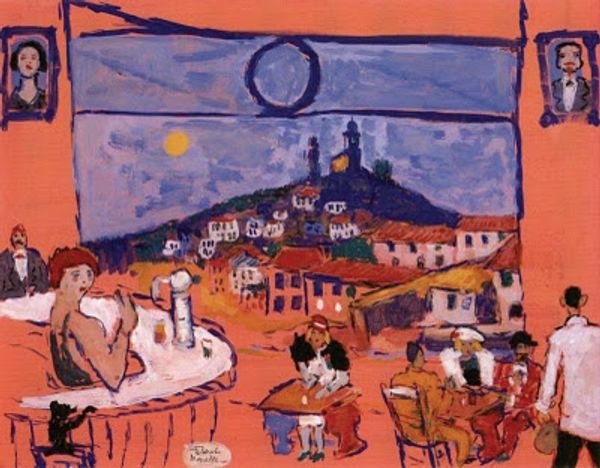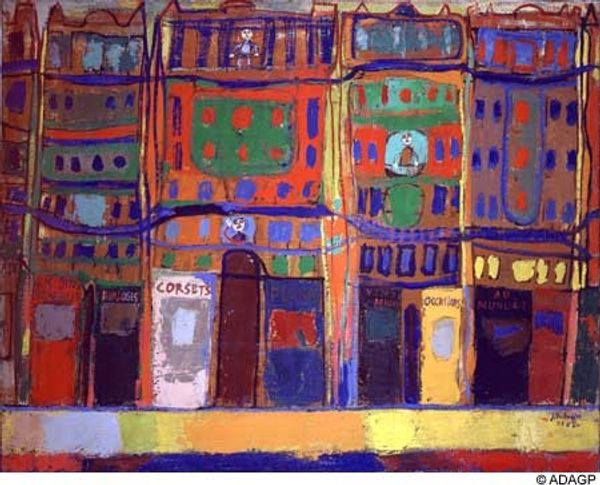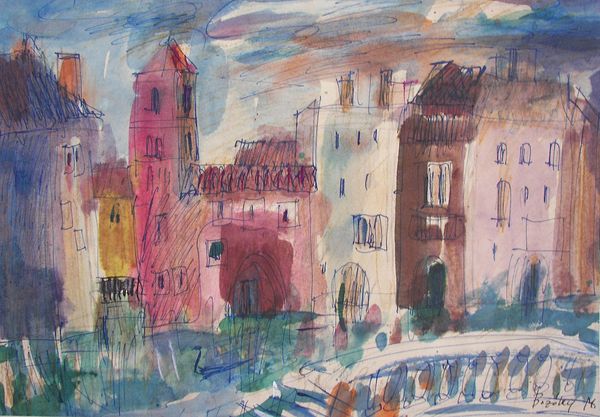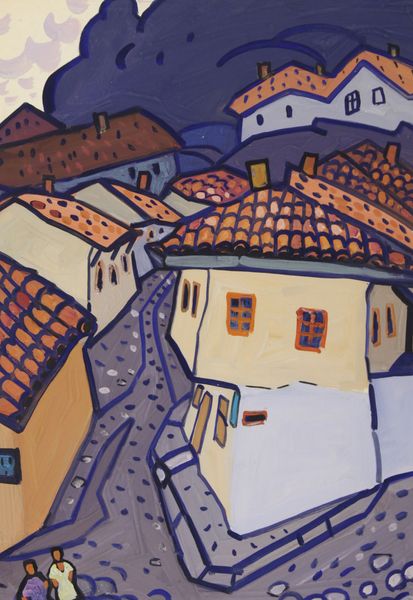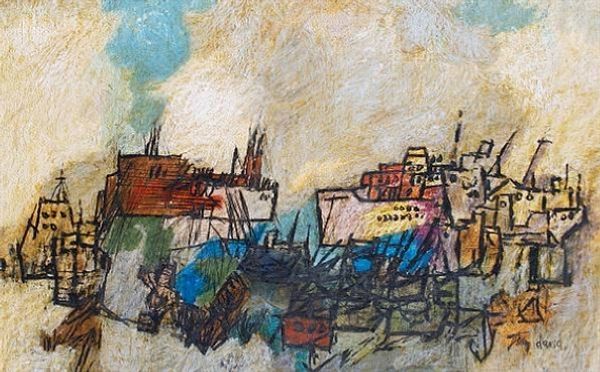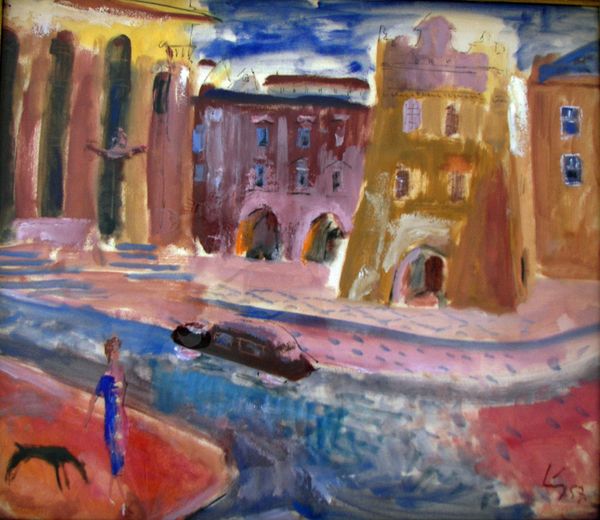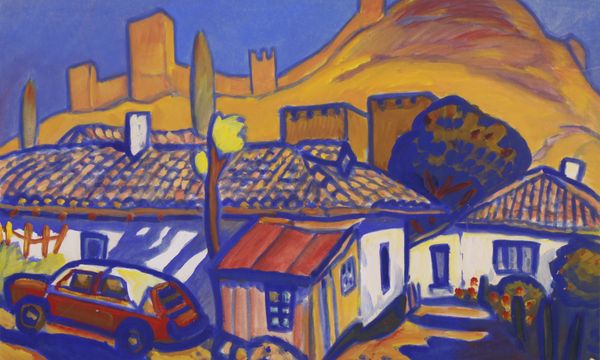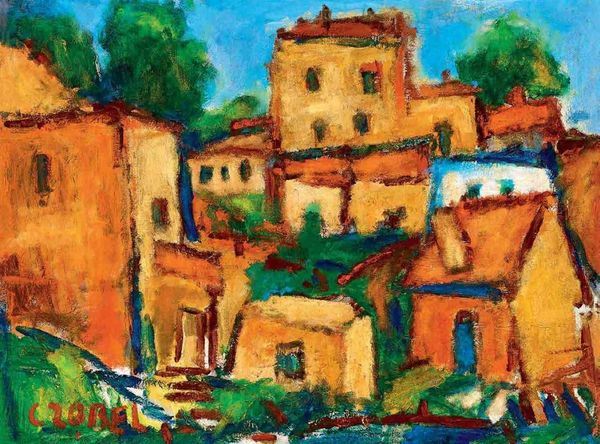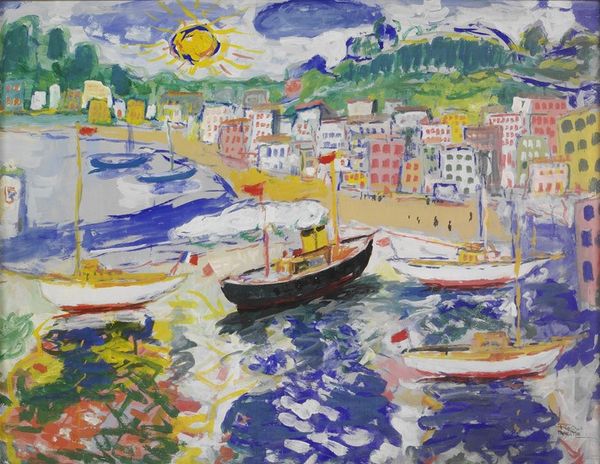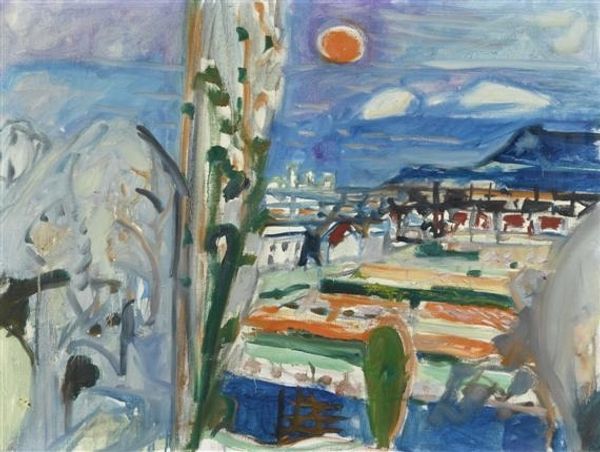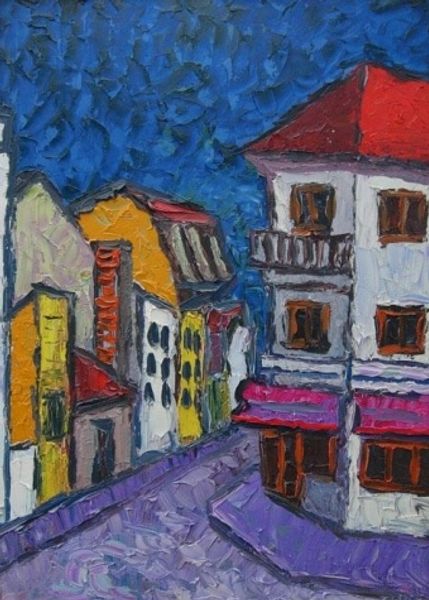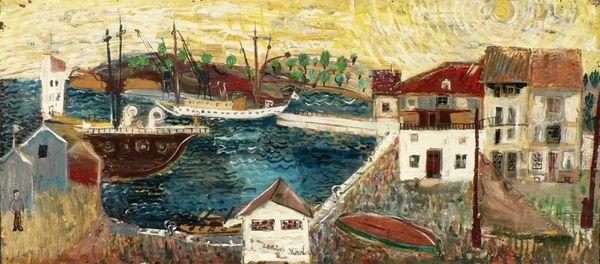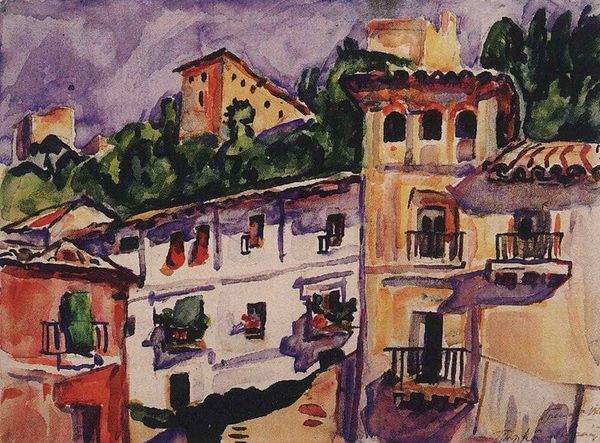
painting, oil-paint
#
painting
#
oil-paint
#
landscape
#
expressionism
#
naive art
#
cityscape
#
post-impressionism
Copyright: Fikret Mualla Saygi,Fair Use
Curator: Here we see a canvas simply titled "Cannes" by Fikret Mualla Saygi, executed in oil paint with the expressive strokes we associate with Post-Impressionism. Editor: It's positively swimming in cerulean! The heavy impasto almost dissolves the forms; buildings melt into boats under that intensely saturated sky. Curator: Mualla’s cityscapes often feel imbued with a certain melancholy. Given his personal history, perhaps that pervasive blue reflects a longing, a saudade for a place or time. Editor: Melancholy perhaps, but consider the interplay of color: that jolt of ochre against the dominating blue has a defiant vibrancy, don't you think? The upward thrust of the architectural elements, too—defiance through form. Curator: There’s also an echo here of Fauvist color theory, though the application is uniquely Mualla’s. I'm also reminded of how important Cannes became as a symbol for modernist cultural memory and bohemian enclaves, with such rich creative meaning through the avant-garde. Editor: Agreed. And look at those thickly applied strokes describing the harbor—lines so assertive they’re almost violent! It’s less about objective representation and more about emotional impact. It pushes beyond observation into a feeling. Curator: This is also something described as “Naive Art,” right? But beyond that term, I'm more interested in the psychological tension it captures between being an observer and someone existing and working there, between place and placelessness. Editor: Well, for me, that’s the essence of its appeal. Its material presence, the sheer density of paint, transforms a simple scene into an artifact loaded with emotion. The composition may appear informal, but every element seems deliberate. Curator: Seeing beyond the obvious, beyond surface appearances… that is, after all, what art is for. It’s also such a vital reminder of those early twentieth-century cultural scenes and the movement of creativity, migration, and self-discovery. Editor: Absolutely. It gives one much to contemplate; a seemingly simple landscape transformed by a deeply considered application of paint and pigment into something quite resonant.
Comments
No comments
Be the first to comment and join the conversation on the ultimate creative platform.
